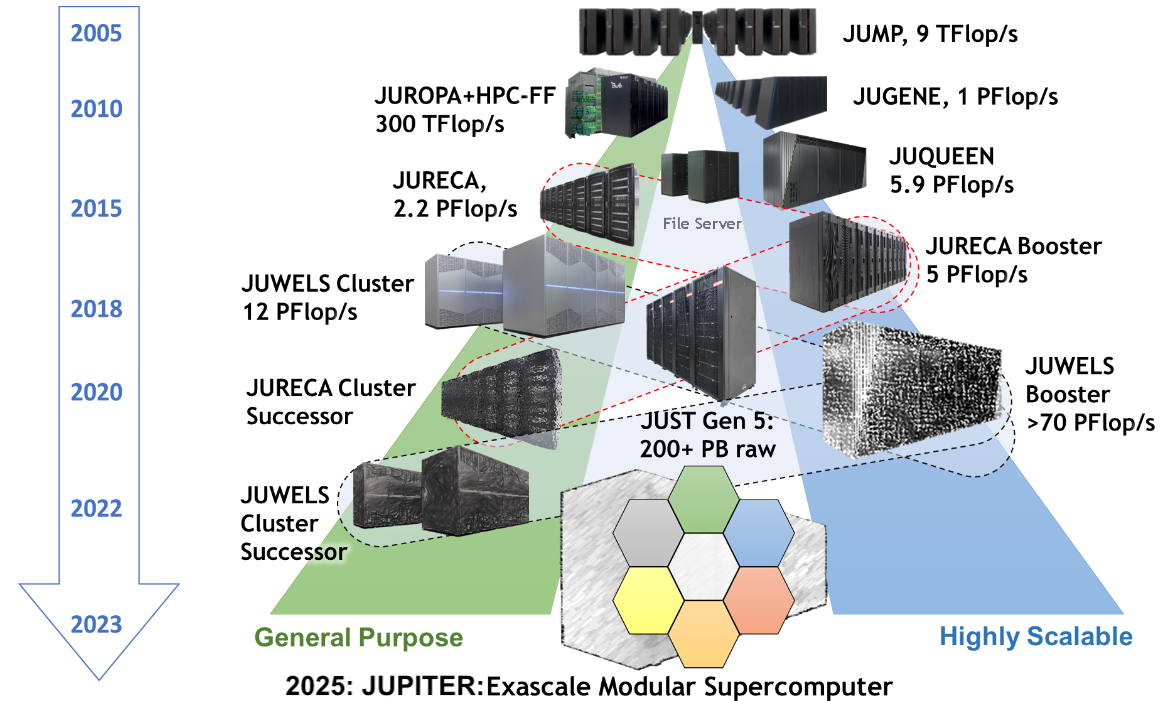Bringing Deep Learning Workloads to JSC supercomputers
Data loading
Alexandre Strube // Sabrina Benassou
June 25th, 2025
Schedule for day 2
| Time | Title |
|---|---|
| 13:00 - 13:10 | Welcome, questions |
| 13:10 - 14:10 | Data loading |
| 14:10 - 14:25 | Coffee Break (flexible) |
| 14:25 - 17:00 | Parallelize Training |
Let’s talk about DATA
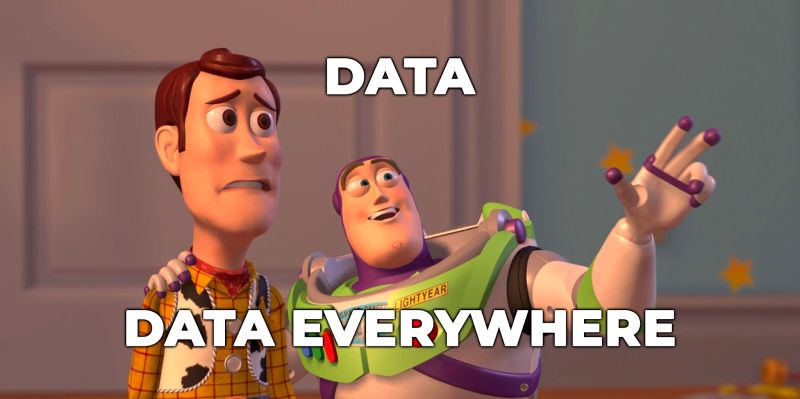
I/O is separate and shared
- All compute nodes of all supercomputers see the same files
- Performance tradeoff between shared acessibility and speed
- Our I/O server is almost a supercomputer by itself
![JSC Supercomputer Stragegy]()
Where do I keep my files?
Always store your code in the project1 folder (
$PROJECT_projectname). In our caseStore data in the scratch directory for faster I/O access (
$SCRATCH_projectname). ⚠️Files in scratch are deleted after 90 days of inactivity.Store the data in
$DATA_datasetfor a more permanent location.
Data loading
- We have CPUs and lots of memory - let’s use them
- If your dataset is relatively small (< 500 GB)
and can fit into the working memory (RAM) of each compute node (along
with the program state), you can store it in
/dev/shm. This is a special filesystem that uses RAM for storage, making it extremely fast for data access. ⚡️ - For bigger datasets (> 500 GB) you have many
strategies:
- Hierarchical Data Format 5 (HDF5)
- Apache Arrow
- NVIDIA Data Loading Library (DALI)
- SquashFS
Inodes
- Inodes (Index Nodes) are data structures that store metadata about files and directories.
- Unique identification of files and directories within the file system.
- Efficient management and retrieval of file metadata.
- Essential for file operations like opening, reading, and writing.
- Limitations:
- Fixed Number: Limited number of inodes; no new files if exhausted, even with free disk space.
- Space Consumption: Inodes consume
disk space, balancing is needed for efficiency.
![]()
Data loading
In this course, we provide you with some examples on how to create and HDF5 and pyarrow files.
We need to download some code:
Move to the correct folder:
cd 2025-06-course-Bringing-Deep-Learning-Workloads-to-JSC-supercomputers/code/dataloading/We used the ImageNet dataset for the examples.
The ImageNet dataset
Large Scale Visual Recognition Challenge (ILSVRC)
- An image dataset organized according to the WordNet hierarchy.
- Extensively used in algorithms for object detection and image classification at large scale.
- It has 1000 classes, that comprises 1.2 million images for training, and 50,000 images for the validation set.
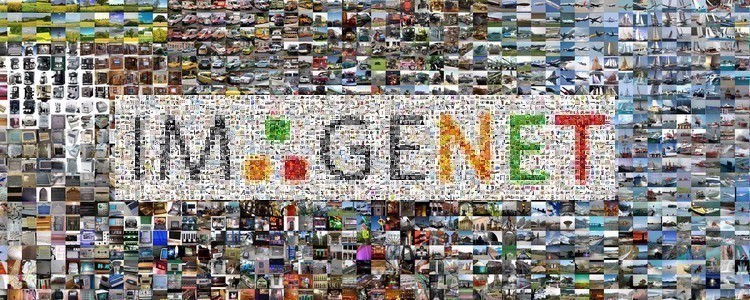
The ImageNet dataset
ILSVRC
|-- Data/
`-- CLS-LOC
|-- test
|-- train
| |-- n01440764
| | |-- n01440764_10026.JPEG
| | |-- n01440764_10027.JPEG
| | |-- n01440764_10029.JPEG
| |-- n01695060
| | |-- n01695060_10009.JPEG
| | |-- n01695060_10022.JPEG
| | |-- n01695060_10028.JPEG
| | |-- ...
| |...
|-- val
|-- ILSVRC2012_val_00000001.JPEG
|-- ILSVRC2012_val_00016668.JPEG
|-- ILSVRC2012_val_00033335.JPEG
|-- ...The ImageNet dataset
imagenet_train.pkl
{
'ILSVRC/Data/CLS-LOC/train/n03146219/n03146219_8050.JPEG': 524,
'ILSVRC/Data/CLS-LOC/train/n03146219/n03146219_12728.JPEG': 524,
'ILSVRC/Data/CLS-LOC/train/n03146219/n03146219_9736.JPEG': 524,
...
'ILSVRC/Data/CLS-LOC/train/n03146219/n03146219_7460.JPEG': 524,
...
}imagenet_val.pkl
HDF5
A binary file format for storing large, complex datasets.
Store data like a file system inside a file.
Hierarchical: organizes data as groups and datasets
HDF5
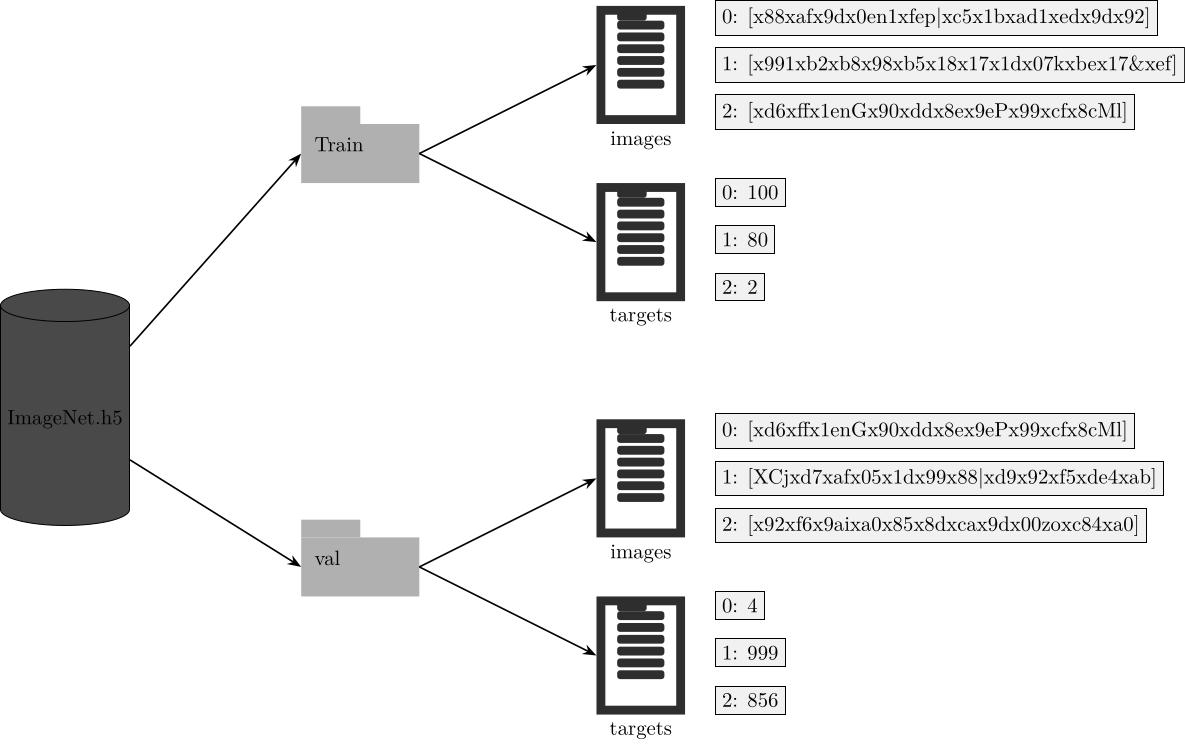
PyArrow
A Python library that provides tools for Apache Arrow – an in-memory columnar data
Stores data as tables, arrays, and record batches
PyArrow
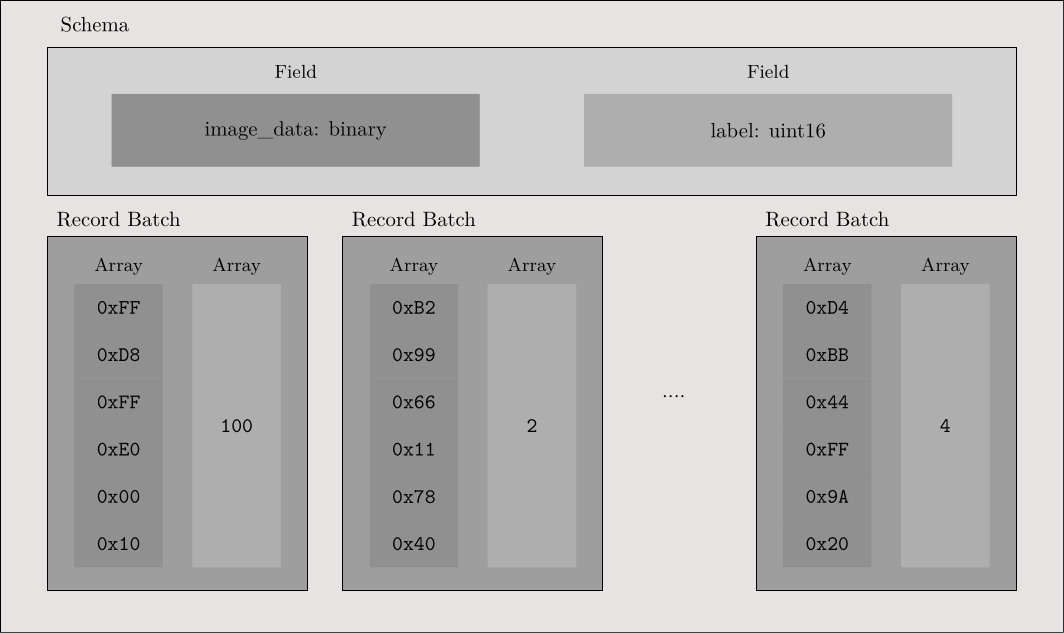
Run examples
The examples are in:
To create the h5 or pyarrow files, you can run the examples by launching
To read those files, you can run:
